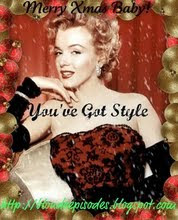Baroque-style silver teapot with some detail — This teapot
demonstrates the beginnings of embellishments that did nothing for
functionality but everything for adding visual appeal to teatime.
Baroque-style Newark Museum display teapot with replaced spout —
Porcelain, silver, 1675-1700 (late Baroque). You can see the ornate
Asian influence here, a common practice as trade routes with China,
India, and other countries brought exotic treasures to the attention of
European potters and ceramic artists. They competed by imitating.
A Rococo Porcelain Veilleuse-Théière — The Porcelain Veilleuse-Theireres style of teapots date from 1750 to 1860 (late Rococo to Victorian).
Rectangular stand, oval pot, rococo, highly decorated with panels of
roses and gilding, other panels rose pompadour. Vieux Paris. Acquired in
Paris for the collection. Cream colors and gilding are typical.
Another Porcelain Veilleuse-Théière — Figurine, man seated on rococo base behind square pot, animalistic spout, boy and girl on stand gaily dressed in flowered clothes in front of shield, white background, much gilding. Acquired in Paris for the collection.
Silver teapot bursting with details — It almost looks like it’s going to walk away on those ornate legs.
Of course, you are going to want to serve Baroque or Rococo style teas
in these. They are going to be teas that are artful and tasty. I would
go for Lapsang Souchong which dates back to the 17th century during the Qing Dynasty (1644-1911). You may even want to try a nice black Ceylon tea (tea growing started in Ceylon as early as the 1700s). A nice Chinese green tea is another choice that will take you back in time. Lots of choices!
... so make a cuppa and then go make something beautiful!
¸.•´¸.•*´¨) ¸.•*´¨)(¸.•´
(¸.•´♥ Tristan ♥
~ With special thanks and acknowledgement to
The English Tea Store Blog and On-Line Stores, Inc ~





















































































2 comments:
There is something so special about having tea from a beautiful tea pot. It elevates the occasion, even if one is taking tea alone. These tea serving vessels are so beautiful, I can't seem to call them "pots"! Thank you for sharing these, Tristan! Now I have to go have some tea.
Gorgeous teapots! I do so love the silver one with those legs! ")
Do you drink tea as well? What kind do you prefer Tristan? I have found a liking for ginger tea as of late!
Jackie
Post a Comment